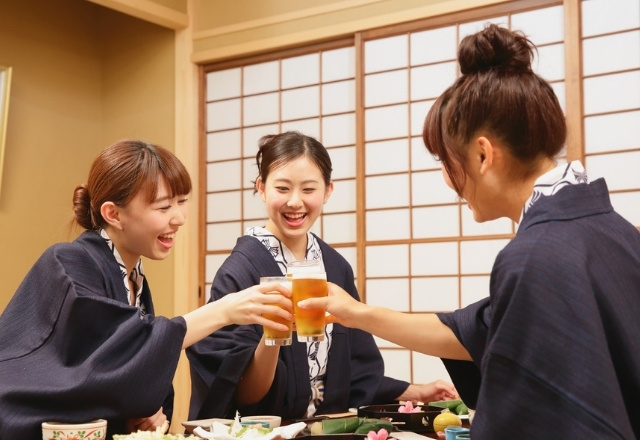Introduction
When you think of Japan, stunning temples, cherry blossoms, and delicious food likely come to mind. But did you know that Japan is also home to some of the world’s most beautiful beaches? Whether you’re a student looking for a weekend escape or a traveler eager to explore, relaxing on a beach in Japan can be an unforgettable experience. From the tropical islands of Okinawa to hidden coastal gems near major cities, let’s check out some of the best Japanese beaches you need to visit at least once!
Why Visit a Beach in Japan?
Beaches in Japan are renowned for their cleanliness, crystal-clear waters, and safe swimming conditions. Many are easily accessible by public transport, making them perfect for international students and travelers alike. Visiting a beach in Japan offers more than just sunbathing: it’s a chance to enjoy local culture, sample fresh seafood, and experience breathtaking natural beauty.
When is the Best Time to Visit a Beach in Japan?
The best time to visit Japan is arguably during the summer, from late June to early September. While it’s the hottest time of the year, the ocean temperature is pleasantly warm, making it ideal for swimming or surfing. However, as the season winds down, the water can become too chilly for water activities.
Just be careful: summer is also typhoon season, so it’s a good idea to check the weather forecast a few days in advance
Top Japan Beach Destinations
1. Okinawa Beaches
The Okinawa islands are paradise on earth. Don’t miss Emerald Beach, Nishihama Beach, and Yonaha Maehama Beach (often called the best Japanese beach). The turquoise waters and white sands are perfect for snorkeling and diving.
Access:
Fly into Naha Airport (OKA), then use local buses or car rentals to reach different islands.
- Emerald Beach: Near Ocean Expo Park (1.5–2 hrs by car from Naha).
- Nishihama Beach: Located on Hateruma Island. Take a ferry from Ishigaki Island.
- Yonaha Maehama Beach: On Miyakojima Island, accessible by flight from Naha or Tokyo.
Tips:
Public transport is limited, renting a car or scooter is highly recommended. Many beaches are free and open year-round.
Head to Okinawa’s official site to plan your visit to Okinawa‘s world-famous beaches!
Even in winter, Okinawa remains a top beach destination. Check out 5 things to do in Okinawa in winter and enjoy the island year-round.
Want to Learn Japanese by the Beach? Yes, Please!
Imagine studying Japanese while living minutes away from white sand beaches and turquoise waters. If you’re looking to combine language learning with a relaxed island lifestyle, Okinawa is the place to be.
We recommend checking out ICLC Okinawa Japanese Language School, our partner school located right in the heart of Okinawa. Whether you’re a total beginner or looking to boost your speaking skills, you’ll find supportive teachers, practical classes, and a welcoming international community.
Learn Japanese in the morning, hit the beach in the afternoon. Sounds like a dream? It’s real life in Okinawa.
2. Shirahama Beach (Wakayama)
Popular with students from the Kansai region, Shirahama Beach features white sand and nearby soothing hot springs. It’s an ideal spot for a weekend getaway.
Access:
Take the JR Limited Express Kuroshio from Shin-Osaka to Shirahama Station (2.5 hours), then a local bus or taxi to the beach.
Tips:
Combine your visit with a trip to Shirahama Onsen or the Adventure World zoo. Many hotels offer free shuttle service from the station.
3. Yuigahama Beach (Kamakura)
Located just an hour from Tokyo, Yuigahama is a favorite beach in Japan for city dwellers. The laid-back atmosphere and nearby temples make for a perfect day trip from Tokyo.
Access:
From Tokyo Station, take the JR Yokosuka Line to Kamakura (~1 hour), then a 15-minute walk or short ride on the Enoden Line to Yuigahama Station.
Tips:
Perfect for a day trip. Bring cash, many small shops and cafés are cash-only. Visit nearby temples like Hasedera or the Great Buddha (Daibutsu).
Explore Kamakura‘s coastal attractions near Yuigahama Beach.
4. Zushi Beach (Kanagawa)
Another beach near Tokyo, Zushi, is popular with surfers. It has a relaxed vibe and offers great views of Mount Fuji on clear days.
Access:
Take the JR Yokosuka Line from Tokyo to Zushi Station (~1 hour), then a 10-minute walk to the beach.
Tips:
Popular with locals, especially on weekends. Rentals for SUP, surfboards, and umbrellas available on-site in summer. Watch for Mount Fuji on clear days!
5. Amami Oshima Beaches
These remote islands boast lush nature and pristine beaches with minimal crowds. It’s a great destination for those seeking tranquility.
Access:
Fly into Amami Airport from Tokyo, Osaka, or Fukuoka (~2 hours). Rent a car to explore beaches like Tomori, Ohama, or Kurasaki.
Tips:
Less touristy than Okinawa, perfect for nature lovers. Some beaches may not have lifeguards or facilities, so plan ahead.
6. Yonaha Maehama Beach (Miyakojima)
Often considered the most beautiful Japanese beach, Yonaha Maehama stretches for seven kilometers of powdery white sand and crystal-clear waters.
Access:
Fly directly to Miyako Airport from Tokyo or Naha, then drive or take a taxi (~15 minutes) to the beach.
Tips:
No entrance fee. Ideal conditions for swimming and photography. Visit the nearby Irabu Ohashi Bridge for scenic views.
7. Kujukuri Beach (Chiba)
This 60-kilometer stretch of sandy coastline is perfect for surfing and weekend student trips from Tokyo.
Access:
Take a train to Chōshi or Mobara Station, then a local bus or taxi. For flexibility, driving from Tokyo (about 90 minutes) is best.
Tips:
Great for surfing year-round. Popular with student groups and weekend travelers. Facilities vary depending on the area, some spots are more developed than others.
Bonus: Hidden Japan Beach Gems
- Wakayama’s Kataonami Beach – small and peaceful.
- Itoshima Beaches (Fukuoka) – popular with students in Kyushu.
- Maizuru Beach (Kyoto Prefecture) – lesser known but charming.
Tips for Visiting a Beach in Japan
- Respect Beach Etiquette
Japanese beaches are usually clean, and that’s thanks to the people who visit them.
- Always take your trash with you, even if there are no bins.
- Avoid loud music or disruptive behavior.
- Many beaches have designated swimming zones, don’t swim outside the flags or beyond the ropes. Lifeguards are only present during the official swimming season.
- Follow Swimming Rules
Swimming is generally allowed only during the designated season (usually July–August), and sometimes only during specific hours.
- Red or yellow flags indicate dangerous conditions, do not enter the water.
- Jellyfish nets may be installed during peak season.
- Alcohol is discouraged (and sometimes banned) on many beaches.
- Use Public Transportation
Many popular beaches are easily accessible by train and bus, especially near Tokyo, Osaka, or Fukuoka.
- During summer, trains to beach towns may be crowded, travel early in the day.
- Some remote beaches (like Amami Oshima or Miyakojima) are better reached by rental car.
Check local transportation websites or use Google Maps with Japanese names for more accurate routes.
- Check Weather and Tide Information
Japan’s coastlines can be affected by typhoons, strong tides, and sudden weather changes, especially from June to September.
- Check the Japan Meteorological Agency website or local city/town websites for alerts.
- Apps like Windy, Surfline, or Japan Surf Forecast are also useful for surfers and swimmers.
- Some beaches close temporarily during bad weather, always check before leaving.
Useful Japanese Vocabulary for a Day at the Beach
Planning a beach trip in Japan? Here are a few simple Japanese phrases that might come in handy — and impress the locals!
| Japanese | Romaji | English |
| 一番近いビーチはどこですか? | Ichiban chikai bīchi wa doko desu ka? | Where is the nearest beach? |
| ここで泳げますか? | Koko de oyogemasu ka? | Can I swim here? |
| サーフボードを借りられますか? | Sāfubōdo o kariraremasu ka? | Do you rent surfboards? |
| きれいですね! | Kirei desu ne! | It’s beautiful! |
| 日本語を勉強しています。 | Nihongo o benkyou shiteimasu. | I’m learning Japanese |
Activities to Do in Japanese Beaches
Each beach in Japan offers something unique, whether you’re into relaxation, surfing, or cultural experiences. Here’s a quick guide to help you choose the perfect spot based on your interests:
| Beach | Recommended Activities |
| Yonaha Maehama (Okinawa) | Swimming, sunset walks, and stand-up paddleboarding |
| Shirahama (Wakayama) | Relaxing in nearby hot springs, visiting the Adventure World zoo, local street food tours |
| Kujukuri (Chiba) | Surfing, beach volleyball, summer BBQs |
| Yuigahama (Kamakura) | Beach strolls, visiting Kamakura temples, local cafés |
| Amami Oshima | Snorkeling, eco-tours, wildlife spotting |
| Zushi (Kanagawa) | Surfing, SUP (stand-up paddleboarding), Mount Fuji views |
Local Food & Drink Recommendations
No beach day is complete without good food! Here are some delicious local treats to try near each beach:
- Emerald Beach (Okinawa) – Try sata andagi, Okinawan deep-fried donuts, or cool down with blue seal ice cream.
- Shirahama (Wakayama) – Grab fresh seafood bowls or enjoy an onsen egg from a local hot spring vendor.
- Kujukuri Beach (Chiba) – Perfect for a seaside BBQ or miso ramen at a nearby local shop.
- Yuigahama (Kamakura) – Enjoy a shaved ice dessert (kakigōri) or traditional Japanese sweets from a nearby temple street.
- Zushi Beach (Kanagawa) – Grab a beachside beer or bento from Zushi Marina cafés.
- Itoshima (Fukuoka) – Known for beachfront cafés serving locally roasted coffee and artisan burgers.
Useful Japanese Vocabulary for a Day at the Beach
Planning a beach trip in Japan? Here are a few simple Japanese phrases that might come in handy — and impress the locals!
| Japanese | Romaji | English |
| 一番近いビーチはどこですか? | Ichiban chikai bīchi wa doko desu ka? | Where is the nearest beach? |
| ここで泳げますか? | Koko de oyogemasu ka? | Can I swim here? |
| サーフボードを借りられますか? | Sāfubōdo o kariraremasu ka? | Do you rent surfboards? |
| きれいですね! | Kirei desu ne! | It’s beautiful! |
| 日本語を勉強しています。 | Nihongo o benkyou shiteimasu. | I’m learning Japanese |
Activities to Do in Japanese Beaches
Each beach in Japan offers something unique, whether you’re into relaxation, surfing, or cultural experiences. Here’s a quick guide to help you choose the perfect spot based on your interests:
| Beach | Recommended Activities |
| Yonaha Maehama (Okinawa) | Swimming, sunset walks, and stand-up paddleboarding |
| Shirahama (Wakayama) | Relaxing in nearby hot springs, visiting the Adventure World zoo, local street food tours |
| Kujukuri (Chiba) | Surfing, beach volleyball, summer BBQs |
| Yuigahama (Kamakura) | Beach strolls, visiting Kamakura temples, local cafés |
| Amami Oshima | Snorkeling, eco-tours, wildlife spotting |
| Zushi (Kanagawa) | Surfing, SUP (stand-up paddleboarding), Mount Fuji views |
Local Food & Drink Recommendations
No beach day is complete without good food! Here are some delicious local treats to try near each beach:
- Emerald Beach (Okinawa) – Try sata andagi, Okinawan deep-fried donuts, or cool down with blue seal ice cream.
- Shirahama (Wakayama) – Grab fresh seafood bowls or enjoy an onsen egg from a local hot spring vendor.
- Kujukuri Beach (Chiba) – Perfect for a seaside BBQ or miso ramen at a nearby local shop.
- Yuigahama (Kamakura) – Enjoy a shaved ice dessert (kakigōri) or traditional Japanese sweets from a nearby temple street.
- Zushi Beach (Kanagawa) – Grab a beachside beer or bento from Zushi Marina cafés.
- Itoshima (Fukuoka) – Known for beachfront cafés serving locally roasted coffee and artisan burgers.
Useful Japanese Vocabulary for a Day at the Beach
Planning a beach trip in Japan? Here are a few simple Japanese phrases that might come in handy — and impress the locals!
| Japanese | Romaji | English |
| 一番近いビーチはどこですか? | Ichiban chikai bīchi wa doko desu ka? | Where is the nearest beach? |
| ここで泳げますか? | Koko de oyogemasu ka? | Can I swim here? |
| サーフボードを借りられますか? | Sāfubōdo o kariraremasu ka? | Do you rent surfboards? |
| きれいですね! | Kirei desu ne! | It’s beautiful! |
| 日本語を勉強しています。 | Nihongo o benkyou shiteimasu. | I’m learning Japanese |
Activities to Do in Japanese Beaches
Each beach in Japan offers something unique, whether you’re into relaxation, surfing, or cultural experiences. Here’s a quick guide to help you choose the perfect spot based on your interests:
| Beach | Recommended Activities |
| Yonaha Maehama (Okinawa) | Swimming, sunset walks, and stand-up paddleboarding |
| Shirahama (Wakayama) | Relaxing in nearby hot springs, visiting the Adventure World zoo, local street food tours |
| Kujukuri (Chiba) | Surfing, beach volleyball, summer BBQs |
| Yuigahama (Kamakura) | Beach strolls, visiting Kamakura temples, local cafés |
| Amami Oshima | Snorkeling, eco-tours, wildlife spotting |
| Zushi (Kanagawa) | Surfing, SUP (stand-up paddleboarding), Mount Fuji views |
Local Food & Drink Recommendations
No beach day is complete without good food! Here are some delicious local treats to try near each beach:
- Emerald Beach (Okinawa) – Try sata andagi, Okinawan deep-fried donuts, or cool down with blue seal ice cream.
- Shirahama (Wakayama) – Grab fresh seafood bowls or enjoy an onsen egg from a local hot spring vendor.
- Kujukuri Beach (Chiba) – Perfect for a seaside BBQ or miso ramen at a nearby local shop.
- Yuigahama (Kamakura) – Enjoy a shaved ice dessert (kakigōri) or traditional Japanese sweets from a nearby temple street.
- Zushi Beach (Kanagawa) – Grab a beachside beer or bento from Zushi Marina cafés.
- Itoshima (Fukuoka) – Known for beachfront cafés serving locally roasted coffee and artisan burgers.
Exploring Japan’s beaches also means tasting the local culture, literally!
Conclusion
Whether you’re planning to study in Japan or just visiting, experiencing a Japanese beach should be on your bucket list. The diversity of beaches, from tropical islands to surf spots near the city, means there’s something for everyone. Thinking about studying near the coast? Book a free consultation with Coto School Finder and explore our partner schools located in some of Japan’s most beautiful coastal cities.
What is the most beautiful beach in Japan?
Yonaha Maehama Beach in Miyakojima is widely considered the most stunning.
Can you swim at beaches in Japan?
Yes, but most beaches have designated swimming seasons (usually July–August).
When is the best time to visit a beach in Japan?
Summer (July to early September) is the best time for beach activities.
Are Japan's beaches free to enter?
Most public beaches are free, but some private beaches may charge a small fee.
Are there any beaches near Tokyo?
Yes! Yuigahama Beach and Zushi Beach are both popular options close to Tokyo.





